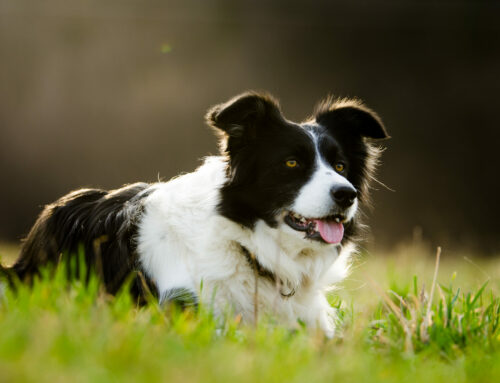Halloween can be a really fun time for all the family, with lots of opportunities for dressing up and eating lots of lovely treats! It’s always fun to get involved in the spirit of the season, whilst making sure that our pets stay safe and happy during our celebrations. After all, they are part of the family, so it’s important that everyone enjoys the autumnal Halloween festivities.
To help you make sure everyone enjoys the spooky fun, we’ve put together this blog to help you recognise some possible risks for pets, and to give you some things to consider from your pet’s point of view during Halloween.
Chocolates – Halloween is a great opportunity to eat lots of chocolate! Lots of seasonal creepy confectionery is available in the shops and many of us will definitely be taking advantage of this. It’s common knowledge that chocolate is toxic to dogs, as it contains theobromine and caffeine and the darker the chocolate, the more toxic it is to dogs. Both theobromine and caffeine stimulate the nervous system. Dogs struggle to break down these chemicals, and ingestion can cause problems such as increased heart rate, high temperature, increased urination and respiratory problems. To keep your dog safe, keep chocolate well secured, out of the range of inquisitive dog noses.
Sweets – Just like chocolate, spooky sweets are likely to be a big part of your Halloween celebrations. Lots of sweets in the UK use natural sugars, however, some don’t and they can contain Xylitol (sometimes called “birch sugar”) which is an artificial sweetener. Xylitol can cause dangerously low blood sugar levels in dogs, and can also lead to liver problems. It’s also important to remember that large quantities of sugar aren’t healthy for dogs, and that sweets can cause other problems such as getting stuck in the throat or intestine. Remember to be careful about the wrappers too – if your dog steals some sweets, they are likely to eat them rather quickly, meaning they swallow the wrappers as well!
Raisins – If you’ve been doing some Halloween baking, it’s important to remember that not all baking ingredients are safe for pets, so make sure that your lovely Rocky Roads, or chocolate cakes are well out of reach of hungry hounds. We’ve already mentioned the chocolate, but ingredients like raisins (which are often found in our favourite Rocky Road or flapjack bars) can be toxic to dogs. If your dog manages to eat any, it’s important to call your vets as soon as you can.
Pumpkins – Whilst pumpkins themselves are not problematic for pets, pumpkin lanterns containing candles can be a bit risky for hairy waggy tails. It’s easy for a happy Halloween Hound to knock your pumpkin lantern over with their tail, and we all know how cats like to knock items off work surfaces. Knocking over a pumpkin lantern could cause burns to your pet, or even set fire to surroundings. The best thing to do, is to make sure that all pumpkin lanterns are kept high up, away from pets, or use battery operated tea-lights or candles inside your pumpkins instead.
Trick or Treaters – Trick or Treating was originally an American tradition, and has become increasingly popular in the UK in recent years. It can be great for community spirit, but it’s worth remembering that lots of dogs are reactive to doorbells, or people knocking at the door. For some dogs, this is a source of anxiety and fear – others simply become over-excited by this. However your dog reacts, it’s important to remember that you may need to manage their reactivity. Resources such as AbsoluteDogs are great for owners of reactive or excitable dogs – there are lots of positive, games-based training ideas which you can use to help keep your dog calm, and to help you manage reactive behaviour. It’s worth thinking about this well in advance of Halloween, so that you can practice the training with your dog ahead of the celebrations, meaning you’ll have a better chance of the training games being successful when it comes to Halloween.
Costumes – Humans aren’t the only ones that can find themselves in a costume at Halloween! There are lots of pet costumes available too. If you’re wanting to dress up in some creepy costumes, it’s worth introducing your dog to your costume carefully ahead of Halloween. Some dogs might find the sight of their owner in a costume a little bit scary, so it’s important to ensure they are comfortable with your new look. This should help Halloween be a much more positive experience for your pet – not everyone is supposed to be scared at Halloween! As far as pet costumes go, the same applies. Not all dogs enjoy playing dress-up. If you really want to dress up your dog, then make sure you spend time positively reinforcing the costume with lots of fuss and rewards, and don’t force them into wearing something they are not comfortable with. Be aware that some dogs may decide it’s a great idea to chew their costume if left unattended – this can lead to problems such as gastrointestinal foreign bodies, which can need surgery to remove. If in doubt, it’s best not to dress your dog up and focus on making the humans in your family into the super scary Halloween spooks.
By taking care to positively reinforce Halloween, and by keeping foodstuffs and objects that are risky to pets well secured, it’s possible for everyone to have a fun time this Halloween.



